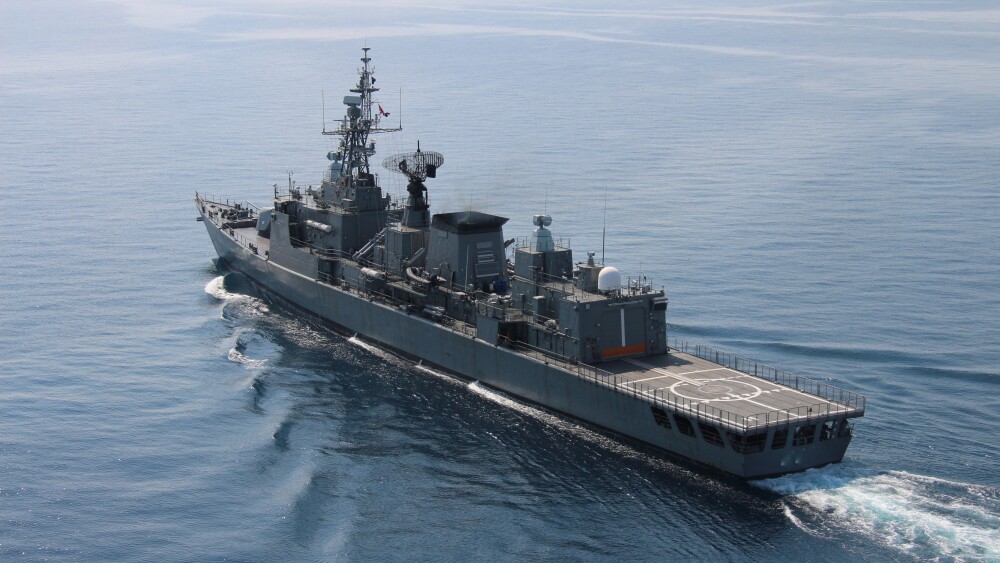The Islamic Republic is weak, its terrorist network degraded, its nuclear program crippled, and its economy collapsing. Nevertheless, Iranian officials threaten to disrupt energy markets by using its navy to close the Strait of Hormuz. As Israel considers its next steps, it should kneecap the Iranian Navy to undercut the regime’s ability to project force and support its proxy networks.
[Israel] should target Iranian ports used for harboring Islamic Revolutionary Guard Corps Navy assets and weapons smuggling centers.
Iran operates two separate navies: the Islamic Republic of Iran Navy and the Islamic Revolutionary Guard Corps Navy. In 2007, Tehran restructured them, assigning the Persian Gulf—and defense of Iran’s lucrative gas fields—to the Revolutionary Guard Navy, and projection of power more broadly to the regular navy. Both navies operate in the Strait of Hormuz. The Iranian military, meanwhile, has transformed commercial ships into “floating bases” for intelligence collection and naval operations. Vessels like the M/V Saviz and M/V Behshad collect maritime intelligence, support Houthi attacks, and deploy drones and radar systems that allow Tehran to monitor and attack targets while maintaining plausible deniability.
Signals intelligence ships such as M/V Saviz Zargos, the cruise missile-launching destroyer Deilaman, and the drone carrier Shahid Beheshti demonstrate Tehran’s quest to use the navy to amplify its power projection. The navy’s fast-attack boats and specialized intelligence and offensive operations units threaten regional transit and Israeli commercial ships. Israel should neutralize these capabilities to disrupt Tehran’s maritime intelligence, hinder proxy coordination, and protect Israeli commercial vessels.
Just as Israel targeted Houthi ports, it should target Iranian ports used for harboring Islamic Revolutionary Guard Corps Navy assets and weapons smuggling centers. A 2022 United Nations Yemen report revealed thousands of intercepted weapons originated from the Iranian port of Jask. In April 2025, a mishandled Chinese shipment of ammonium perchlorate, meant for Iran’s ballistic missile arsenal, resulted in an explosion and fire at Shahid Rajaee port. In July 2025, the Yemeni National Resistance Forces intercepted 750 tons of smuggled arms and precursors from Bandar Abbas, including hydrazine and liquid nitrogen for missiles and explosives production. Covert strikes on these ports would allow Israel to cripple Iranian logistical support and weaken its proxy networks.
Israel should eliminate senior commanders … to fracture command cohesion, delay decision-making, and erode discipline.
The regular Iranian navy has headquarters in Bandar Abbas, Jask, Chabahar, and Bandar Anzali, while the Revolutionary Guard Navy maintains bases in Bandar Abbas, Bushehr, Mahshahr, Asaluyeh, and Lengeh. Israel should target these headquarters to dismantle maritime coordination networks. Additionally, the Israeli Air Force might target naval academies such as the Imam Khomeini Naval Academy in Nowshahr, the Imam Khamenei Academy, and its affiliates in Rasht, Shiraz, and Esfahan, for their role training officers in asymmetric warfare and fast-attack tactics. Israel also might target island bases on Kish, Abu Musa, Siri, and the Greater and Lesser Tonbs due to their role as elite training and operations centers that host commando units. Covert Israeli attacks on these sites would degrade Iran’s ability to train, deploy, and support maritime readiness.
Israel should eliminate senior commanders such as Ali Fadavi, Alireza Tangsiri, Habibollah Sayyari, Gholamreza Khadem Bigham, and others to fracture command cohesion, delay decision-making, and erode discipline. If the regime sought to replace them with inexperienced conscripts, it would degrade operations, reduce confidence in the command structure, and weaken naval coordination.
Israeli covert operations against key Iranian naval vessels, ports, universities, and command centers would cripple Tehran’s maritime activities, secure regional waters, and weaken Iran’s ability to threaten the Strait of Hormuz or supply its proxies. Any attempt by the regime to rebuild its naval capabilities would burden its already limited finances, constrained by international sanctions, forcing trade-offs between naval recovery and nuclear and ballistic missile development.
As Supreme Leader Ali Khamenei signals a rejection of any compromise to end Iran’s nuclear program, further military conflict appears inevitable. The Islamic Republic will always pose a danger with its ballistic missiles and terrorist proxies, but by rolling back its naval force projection, Israel can contain the threat while simultaneously enhancing freedom of navigation for the United States and all regional states.





